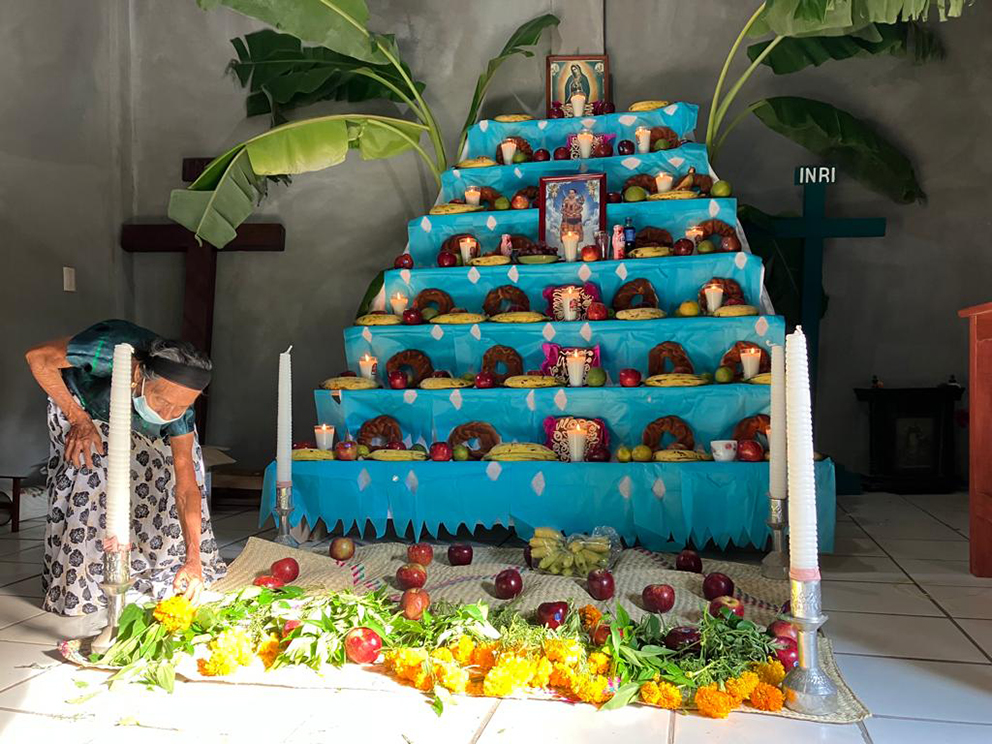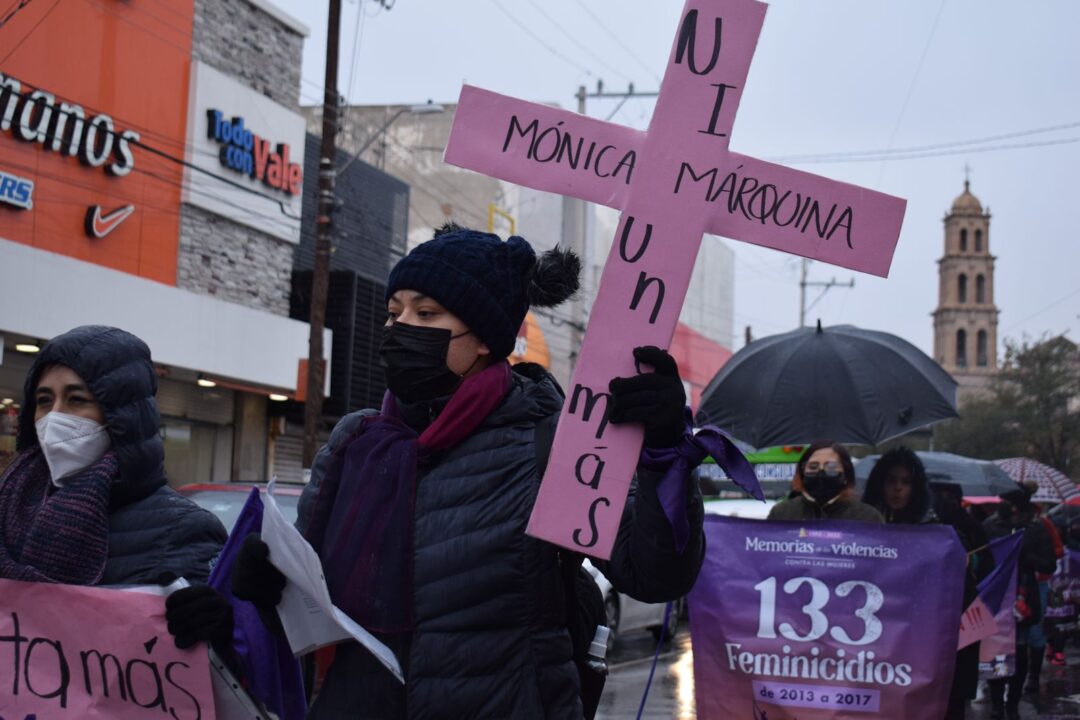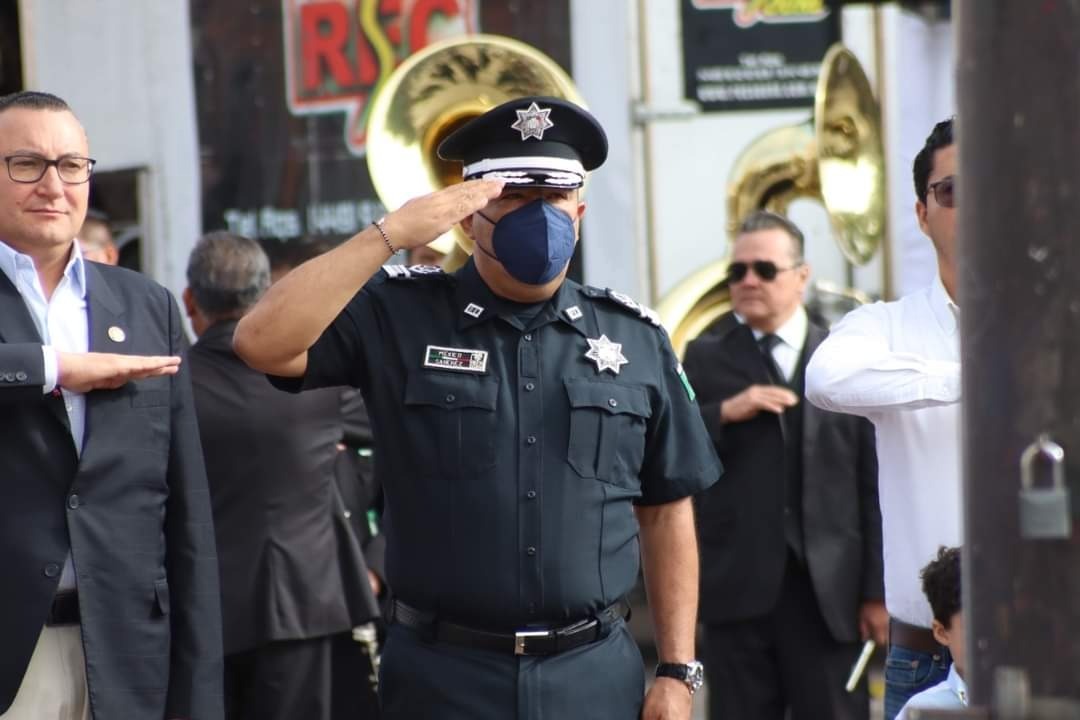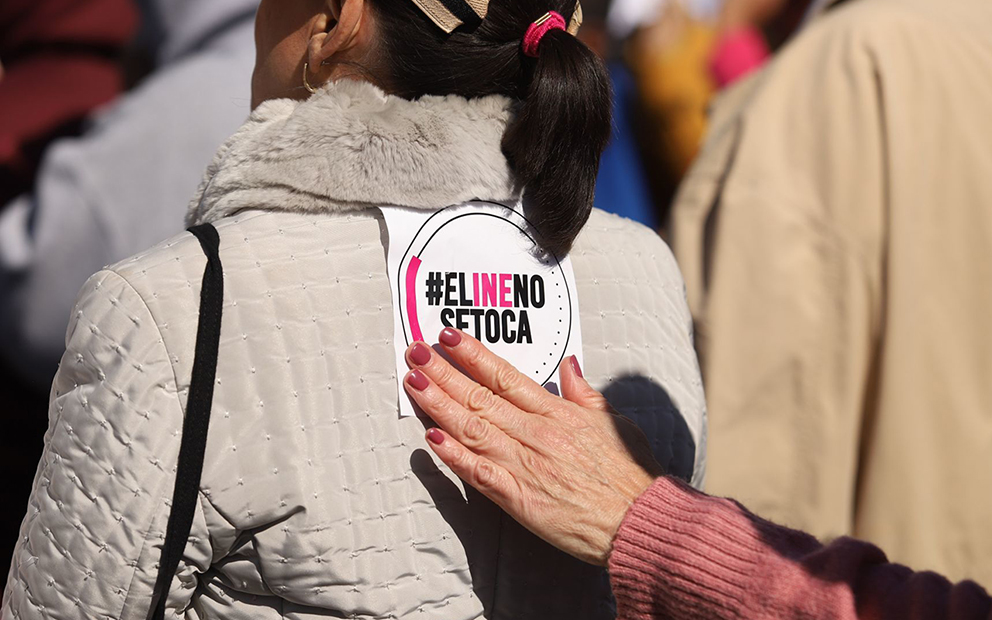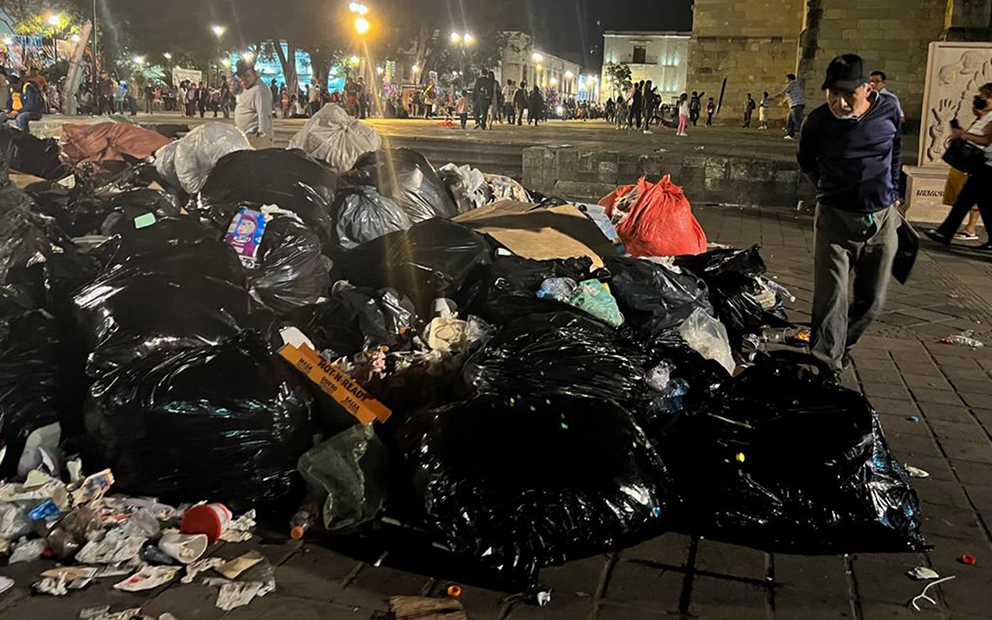The Day of the Dead tradition in Juchitán and the Isthmus of Tehuantepec, Oaxaca, doesn’t just take place on November first and second. Zapotec communities believe that the underworld opens up on October 25th and the souls of deceased family members visit until November 2nd.
Text and photos by Diana Manzo, originally published by IstmoPress on October 30, 2022.
JUCHITÁN—The biye’ or biguie’ is the belief in the return of the dead that resists and lives on among the Zapotec people in Oaxaca. They carry out the holiday on October 30 and 31, when they meet again with their deceased loved ones, not November first and second, and they do so in their homes and not at the cemetery, which makes it a unique tradition.
In Juchitán and other Zapotec towns, the belief is that souls of the dead return and spend time with the living, which is why death is not feared in this region of Oaxaca, rather it is celebrated, as it is part of the cosmogonic cycle, and the ability to be together during these sublime dates is extremely special.
Relatives create the bedxe’ (jaguar), which has an Indigenous cross, and they build a wooden altarpiece adorned with cempasúchil (marigold) and velvet flower, seasonal fruits, and traditional sweetbread.
Others build seven story altars, which is a more Spanish tradition, but it is still Indigenous, as it conserves the elements of the bedxe’.
Each of these altars cost the Zapotec families between $15,000 and $20,000 pesos (US$750-$1000), and they are made of strips of wood from coconut or carrizo trees. They begin to decorate the altars very early on the first day of the celebration (October 30 and 31). The men lay down flowers and fruit, while the women make tamales and atoles (warm corn beverages) which they share with the visitors.
They lay out candles, burlap, and the favorite food and drinks of the deceased. The intent is that the soul that returns is happy during its visit, which lasts the whole day and night, and the candles stay lit until November 2nd at 3pm, when it is believed the souls return to the underworld.
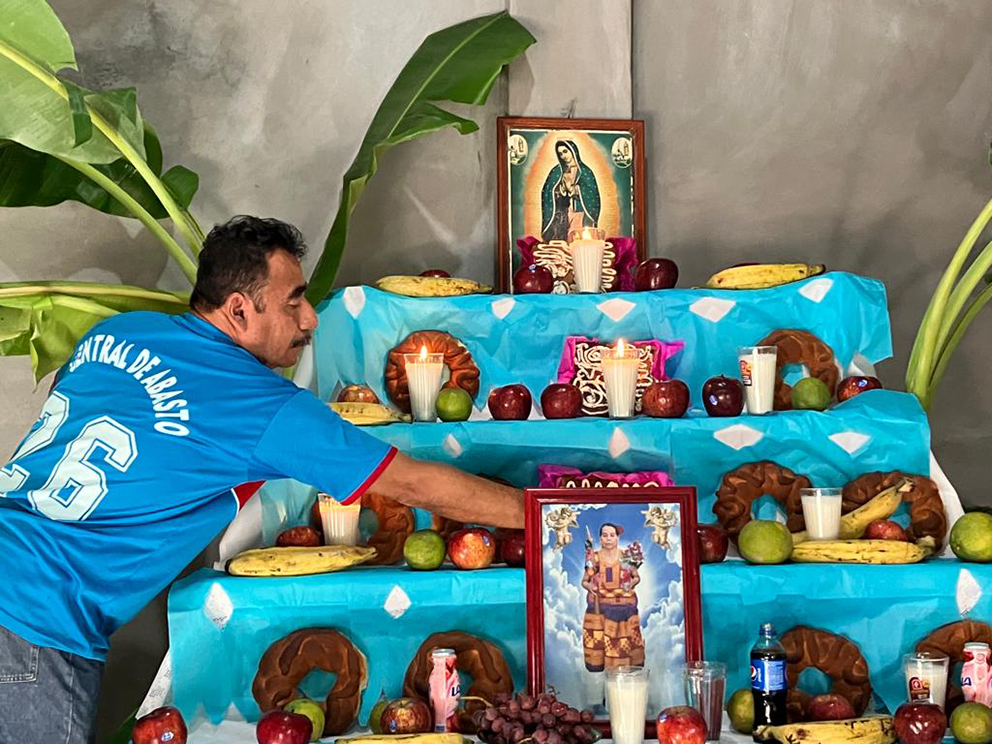

The reunion
“Every year God gives permission to the dead to come and visit us, and we’re here waiting for my sister Micaela, so she can visit with us,” said José Morelos.
The biguie’ or biye’ is dedicated to a person who had died more than six months before; it cannot be performed earlier. The Zapotecs believe that before that, they still don’t have permission to meet the souls of the deceased on earth.
Micaela’s home is all ready for her to return, her neighbors prepare chicken and black mole tamales and her siblings prepare the altar: she likes to drink yogurt, eat apples, and enjoy soft drinks
Micaela died on February 8th, at the age of 78, of respiratory failure. Her siblings comforted themselves in the knowledge that they would be able to visit with her soul from October 30 to November second.
Irma is grieving her husband Cándido Toledo, and she tells her children and grandchildren how to create the bedxe’. She is very sad, because she still misses him.
“Knowing that he will come and visit me, and that I will have him close is a huge comfort, we’re going to see each other again, that’s what this tradition means, it’s a reunion with those who departed before us.”
Cándido, who was a carpenter, died on November 27, 2021. The biguie’ return is something his son Víctor Manuel Toledo Santiago was looking forward to, he felt peace and tranquility because he would again feel the presence of his father, who would enjoy his favorite food and drinks.
“Those who left are not forgotten, and the re-encounter is something we yearn for,” said Isidrio Salinas Aquino, who dedicated his altar to his wife Laura León Blas, who was 38 years old when she passed away last August.
Isidrio says mutual aid, or guendaracanee is always present during this event. His sisters, relatives and friends helped him create the altar dedicated to his wife.
“For us, the return after burial is a purification, because we are going to be together again, it’s a purification for us and for her, these days give us great comfort and happiness amid all the sadness caused by her absence,” he said.
Prayers and copal incense are part of this form of worship. Singing and crying and celebrating the dead take place in homes, from where their bodies were brought to the cemetery, but on the 30th or 31st of October they return to be with their loved ones through the biguie’ or the biye’.
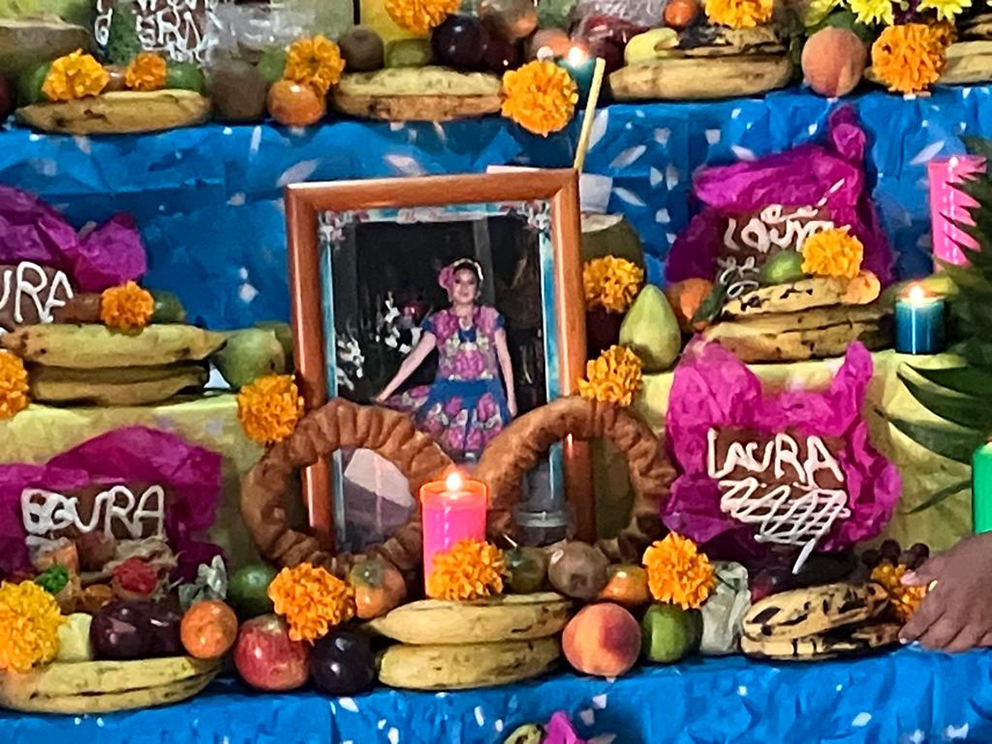
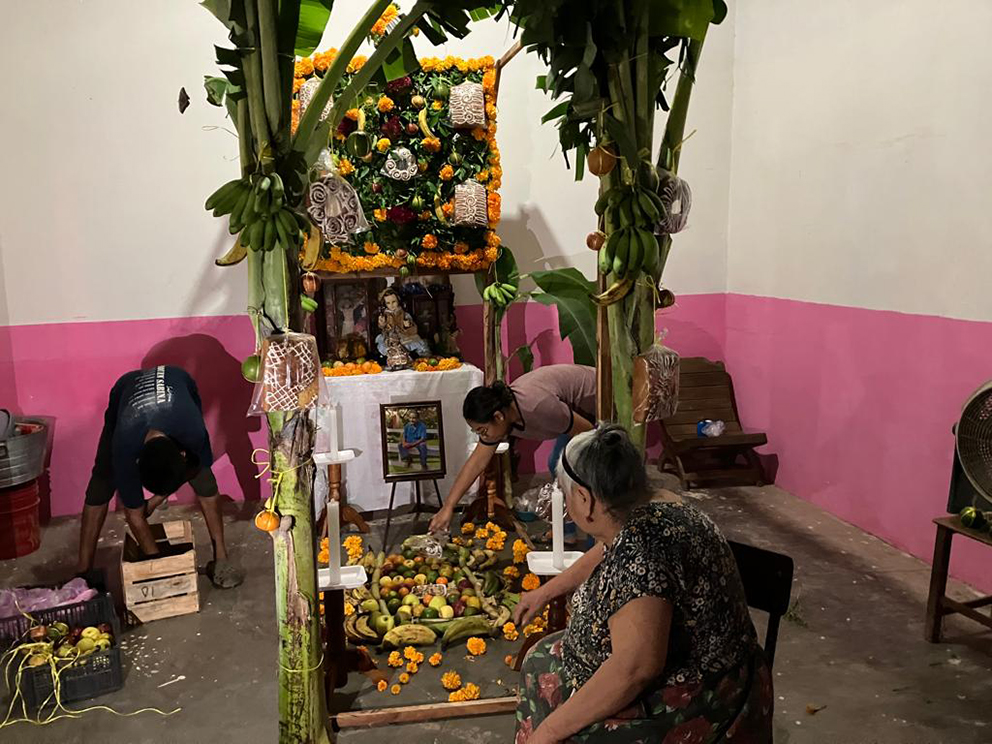
Zapotec traditions resist assimilation
After the Spanish arrived in Juchitán, most residents converted to Catholicism. But some Indigenous people from the south of the village resisted the seven story altars, which the Catholic faith promoted, and carried out their traditional offerings, the bedxe’.
Tomás Chiñas Santiago is a Zapotec historian. He believes the word Xhandu’—which is what some call this holiday—is a Zapotec version of the Spanish word santo (saint), and that the biguie’ is the end the ancient Zapotecs’ religious calendar. He suggests saying “we celebrate biguie’” instead of saying “we celebrate All Saints Day or Xhandu.”
According to Chiñas Santiago, the Zapotec calendar began February 8th, when the agricultural cycle started, and ended on October 25th at the beginning of Gusibaa. At the end of their calendar, they would worship their dead, which they called “biguie.”
The Zapotecs believed that the underworld opened up from October 25 to 30 when the souls of deceased relatives would visit, and be received with enthusiasm and the fruits of the harvest. The underworld is one of three parts of the Zapotec universe, along with the sky and the earth.

Diana Manzo is a reporter based in Union Hidalgo, Oaxaca.
This article was written by ISTMOPRESS, a member of the media alliance of the Red de Periodistas de a Pie. You can read the original here.
Click here to sign up for Pie de Página’s bi-weekly English newsletter.
Ayúdanos a sostener un periodismo ético y responsable, que sirva para construir mejores sociedades. Patrocina una historia y forma parte de nuestra comunidad.
Dona

